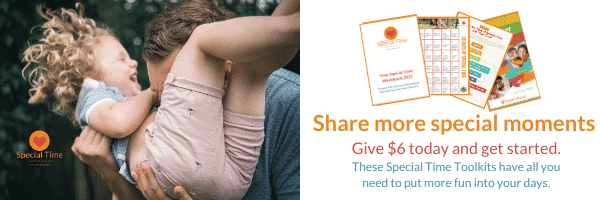A few year’s back when my daughter was about four years old, a new family moved into our neighbourhood and their two children started to play in our back garden. One child was the same age as my daughter and her big brother was about four years older.
The trampoline in our garden was a big attraction and the three children started bouncing on it happily.
I noticed that the older boy was jumping quite aggressively, diving on purpose into his sister and pinning her to the ground.
She shrieked in protest but he refused to get off her and laughed at her attempts to free herself.
He was the only one enjoying the game.
Before I had time to intervene my own daughter took matters into her own hands. She got down to the boy’s level and shouted “No means no. If someone says “STOP” you have to stop.”
I backed her up at this stage. I separated the wrestling children and reinforced the boundary she had stated. I told the kids that the rules for playing at our house were that if someone says “No” or if it is clear that someone is no longer having fun then you have to stop. Immediately.
The older boy reluctantly agreed, but his face hardened as he glared at me for correcting him.
I jumped up and said lightly “Let’s practice consent!”
We ran around inside the trampoline bumping into each other and I light-heartedly wrestled with my daughter trying to make her fall over. My daughter caught on quickly and shouted “Stop!”
I immediately jumped backwards with my hands in the air and a surprised expression on my face. All the kids giggled. She shouted “play” and off we went again. We practiced giving and withdrawing our consent in a playful way for a few minutes before I made my exit and let them play together again.
I kept close watch the next few times the neighbours came to play. I had to enforce the boundary quite a few times with the older child but gradually he came onboard (and if he didn’t, well, my daughter had a lot to say about it).
I was extremely proud that my daughter, aged only four at the time, was able to notice when her friend’s boundaries were being crossed and was able to strongly advocate for her.
This had come about without me explicitly talking to her about consent. It came from modelling consent in our daily interactions. This is how I did that.
Model Consent With Your Kids During Daily Interactions
From when my children were young babies I tried to explain to them what I was doing and asked their permission to wash them, to lift them, to change them. I would ask and then wait for a response. This could be as subtle as a wiggle or making eye contact, before proceeding.
This kind of contingent communication, where we attune to the signals a child is giving us and respond accordingly, gives even very young children the message that they are understood and what they want and need matters and will be respected.
As my children grow older, I do my best to respect their choices. Before I override their own decisions, I try to look at my own motivations. Is this a necessary intervention to keep them safe and well or is it a value judgement on my part? If the intervention is necessary I try to bring the limit with connection and love instead of harshness and force.
Physical play is popular in our home and it is a great opportunity to model and practice consent in a fun way. When we have rough and tumble play, family wrestles or pillow fights, we have a safe word “jellybean” which we use often to pause play if someone is hurt or needs a break.
If anyone yells “jellybean” we pause the play straight away until the person is ready to restart.
This keeps the play safe and fun and also gives my children the opportunity to set their own boundaries and have them respected by others. It is through play and modeling that my children have learnt how to negotiate consent.
How To Raise Kids Who Respect Themselves And Others
One of the biggest worries for parents in the modern world is that their children will become victims or perpetrators of sexual violence.
We also hope our children will form fulfilling and consensual relationships throughout their lives.
Parents want to raise children who respect themselves and others and have the skills to navigate intimate relationships with care and confidence as they grow into adults. Children who will be able to stand up to oppression whenever they see it in the world.
Children learn through observation and experience so sitting our kids down for the sex education talk or reading books about consent may be helpful but what we discuss with our children needs to be reinforced through our actions.
Children learn consent through the everyday interactions we have with them and how we model good boundaries in our daily lives.
Consent begins by seeing children as autonomous people who need our help and guidance but deserve as much respect as we would give an adult.
That does not mean treating a child as if they were an adult.
It means giving children autonomy over their own bodies and the decisions that affect their lives as far as possible.
Once we have laid the groundwork of modeling consent in our day-to-day interactions, we can expand our discussions about consent, in an age appropriate way, to address everything from not touching private parts to consensual sex and pleasure.
These conversations can be ongoing and will arise naturally as our children interact with their friends and the world around them.
Getting intentional: Use These Hand in Hand Tools To Build Consent Principles Into Your Family
The five Hand in Hand tools are based around respect and listening to ourselves and our children so they naturally support and reinforce the principles of consent.
A Chance To Be In Charge
Special Time gives children the chance to be in charge of what happens to them.
By doing regular Special Time with our children, we give them the opportunity to be fully in charge of their own bodies and the decisions they make. They learn to ask for what they need and have their requests respected.
Special Time also gives children space to work on the times when they could not control the decisions being made about them. It is a great way for them to heal from past experiences and gain confidence in asserting themselves.
Start Playing With Power
Playlistening gives children a chance to be the more powerful one for a short time while their caregivers act silly, bumbling or incompetent. Through laughter, children get to offload old fears from the past times they felt powerless. Playlistening and playful limits can help us gain our children’s cooperation without the need to overpower or threaten them into doing something they don’t want to do.
Does Playlistening feel like distraction for you? Discover why that may be in this post.
Model Acceptable Boundaries
An important aspect of consent is setting clear limits with our children so we are modeling boundaries and what is acceptable to us.
We can bring gentle limits with respect, saying “No” to the behaviour but “Yes” to our warmth and connection.
Consent also means asking permission to physically touch a child and respecting a child’s wishes if they do not want to be kissed, cuddled, picked up or tickled.
Using the Hand in Hand tools to model consent can be challenging if you did not have your own boundaries respected when you were a child. You may have been given very little choice and your parents may not have listened to your needs or they may have been overly permissive.
Talking to another parent about the choices (or, perhaps, lack of choices) you had as a child in a Listening Partnership can help you get clear about what you want for your own children.
Set Limits With Family Members Too
Often members of your extended family have not done the same thinking around consent as you may have done.
They may expect kisses and hugs from a child or may tickle, wrestle or pick up children without their consent.
If possible, it is good to talk to your family about your own family values around consent and why it is important to you.
If that isn’t possible or your preferences are still not respected you can explain to your child in advance that it is their choice to kiss/hug a relative and they do not have to if they don’t want to.
You will need to keep a close lookout to help your child navigate this.
You could practice in advance with your Listening Partner how you might set a limit with a family member who insists on kissing your child without their consent.
You can set a playful limit with family members bu lightly saying,“Here’s a kiss from me instead.” If you are lighthearted and confident about the limit, they will be more likely to take it well.
You may also have to set a firmer limit: “I can’t let you kiss them when they don’t want to” and create a physical barrier between your child and the person. This sends a very powerful message to your child that you are advocating for them and their boundaries matter.
You get to stand up for your child in a way that maybe you were not able to do in the past, which can be a very empowering experience for both you and your child.
Get 7 Ways To Get Your Parents On-board With Your Connection Parenting Style
Five Ways To Put Consent At The Center Of Your Family
Tips for comfortable, confident conversations around consent.
- Model consent by always asking permission to kiss, cuddle or pick up your child and making sure others do too.
- Give your child as much control over their lives as you are safely able to do. This gives them the opportunity to make decisions, assert their opinion and have their choices respected.
- Teach basic rules of consent amongst friends and siblings. No means no. Stop means stop. If someone doesn’t look like they are having fun, stop before they say “no”. You may have to step in to enforce these ground rules at first until it becomes natural.
- Start young, you don’t need to talk about sex to start learning consent.
- Practice with your child about how to say “No” in situations when they might feel uncomfortable. This could start with saying “No” during physical play with a sibling and continue as they make decisions with their friends around staying out late, alcohol and other tricky situations.
Teaching children about consent is about so much more than sex education.
It will help your child develop good boundaries in all their relationships from friends to intimate partners to work colleagues and bosses.
Not only do we want our children to stand up for themselves, but also to have the confidence and skills to stand up for others more vulnerable or less privileged than themselves and to call out injustice and oppression wherever they see it in the world.
How do you model consent in your family?
Want to become an even more playful parent?
There's everything you need in our Special Time Toolkits.
You can receive your toolkit as a thank you for any gift you give to this year's Special Time Fundraiser. Go here to give.

